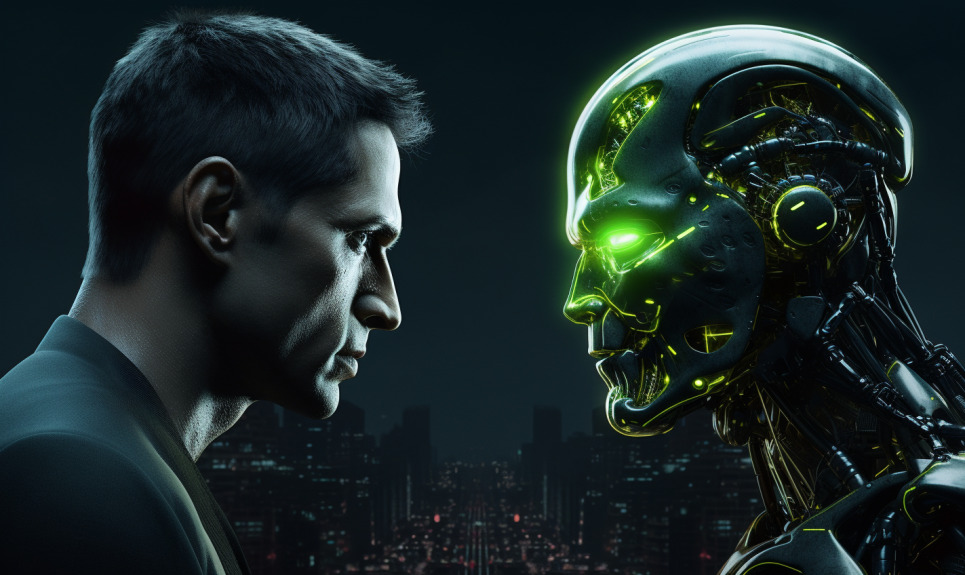Machine learning (ML) is a rapidly growing field of technology. You’ve probably been hearing about it more and more, and sometimes people confuse it with artificial intelligence (AI). Though the two areas are similar, machine learning has some distinct features that set it apart. This machine learning crash course introduction will give you a better idea of the field and how it works.
What Is Machine Learning?
Machine learning is when algorithms learn automatically with experience. The machine itself learns without a human having to guide it or continuously program it.
It differs from AI since AI is the overarching field that works to create human intelligence within computers. Though these two are similar, ML is a subfield within AI that focuses on learning algorithms and patterns.
As the computer programs and systems access data, they can then start to learn it on their own. As the process evolves, experts can use machine learning for automating tasks, predictive analytics, image recognition and smart devices like Google Home.
Further, instead of having exact instructions, machine learning systems have different levels of “supervision.” These levels bring about different methods and results for ML.
Supervised Learning: The First Subcategory of ML
The first kind of learning, supervised learning, is the process in which there is the most human guidance for ML. With this form of supervision, the computer can learn with set examples ready to go.
First, a human must provide the computer with certain examples in its input. They can add labels for guidance as well as the conclusions, or outputs, that the machine is supposed to reach.
Then, it has a base knowledge of where to start. As it sorts more data, it continues to learn — all based on that one data set example from the beginning.
Of course, the machine can eventually learn to move past the original dataset or modify it if it gathers new intelligence. Supervised learning can help with things like image recognition so it can sort quickly and efficiently based on an example.
Unsupervised Learning: The Second Subcategory of ML
With unsupervised learning, the machine is on its own to work with its algorithms. It receives a data set with no input or instructions, and from there, it must break down and label the data correctly.
Technology has progressed far enough that a computer can learn by itself, so unsupervised learning is a common method of programming. Additionally, it’s helpful for sorting through large chunks of data. The more information it has, the better the system can articulate its algorithms.
It will then build its own reference points as it continues to learn from more and more inputs. Unsupervised learning is helpful for analyzing and presenting information like demographics. If you’re trying to market a product or service, unsupervised learning can help you figure out who to market to.
Reinforcement Learning: The Third Subcategory of ML
Feedback is essential for humans to grow and evolve — computers aren’t much different. They can use different forms of feedback to change learning abilities and sort “right” from “wrong.” In reinforcement learning, a computer can learn, with or without human assistance, based on positive and negative feedback.
For instance, if a human inputs that the algorithms made an error, the computer can then learn from that mistake for the future. It now knows what not to do. However, it doesn’t always need a human to make these decisions.
A common example of reinforcement learning is a video game that a computer plays on its own. As it makes errors, loses lives or fails goals in the game, it learns and becomes better. It avoids what it shouldn’t do and focuses on what it should.
Does Anyone Offer a Free Machine Learning Crash Course?
This introductory machine learning crash course is only the beginning. If you wish to take a deep dive into the field, there are additional classes and resources you can consider.
First, Google’s machine learning crash course amounts to a total of 25 lessons and 15 hours. You’ll learn about ML as well as receive experience in the field to further your interest.
Microsoft also offers a crash course in machine learning. With five different modules, this class is shorter at just under four hours. However, it still brings all you need to know about ML.
Machine Learning in the Future
Right now, machine learning is bringing technology to places that people never thought imaginable. This introduction shows the inner workings of how it’s all possible.
In the future, though, you can expect to see ML evolve even more. Maybe one day you’ll even see computers providing input and feedback for each other.
Recent Stories
Follow Us On
Get the latest tech stories and news in seconds!
Sign up for our newsletter below to receive updates about technology trends














